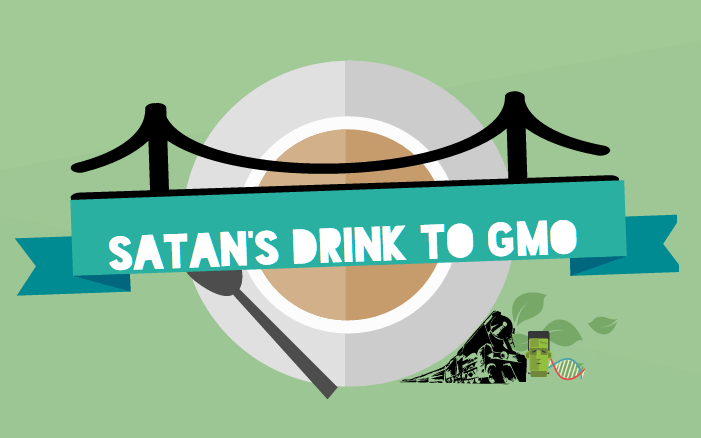Regulation of Satan’s drink to GMOs
Cultures have struggled with innovations for centuries. The risk associated with change and the unknown, whether real or perception, is sometimes so great that society revolts or prolongs acceptance. At times, change is just too much of a ‘risky business’. No not like Tom Cruise sliding across the floor in his gitch in ‘Risky Business’, but rather the uncertainties of innovations could be like opening Pandora’s box.
Although it sounds naïve today, coffee was once a risky beverage. First brewed around 1300 AD, it was not until the Muslim Middle Eastern beverage moved into Christian Europe around 1500 AD, that religious hostilities (and fear) termed coffee as ‘Satan’s drink’. Being a new beverage in Europe, there were various regulatory responses, Germany went so far as to ban coffee. The church felt coffee risked destroying marriages, as men would go to coffee houses, which were closed to women and ignore their families. Eventually, acceptance came and in one German state, by law, men had to provide their wives with coffee (as women still weren’t allowed into coffee houses) and if they didn’t do so, their wives had grounds for divorce.
Mary Shelley’s Frankenstein was writing nearly 200 years ago in 1818 as a social response to the new medical innovation of autopsies. It was deeply unsettling for European society to think of bodies being cut open, analyzed and observed in laboratories, instead of being buried as had been the case for hundreds of years.
In the early 1800s, railroads were individual owned and each rail line’s gauge would vary, meaning only short distances could be traveled by train. By the mid-1800s, rail line gauges were being standardized, allowing for faster and further travel. Medical doctors advised patients not to travel by train as in their expert opinion, passengers internal organs wouldn’t be able to stand the pressure of traveling at the breakneck speed of 25 mph.
The first constructed suspension bridge, the Brooklyn Bridge, opened in 1883 and people were decidedly nervous about whether the bridge was safe to use. A week after opening, a young girl stumbled and tripped while walking across the bridge. Sadly people around her assumed that she had fallen due to the bridge beginning to collapse and the ensuing stampede of people resulted in 12 people being trampled to death in the panic to get off the bridge.
Today many of our questions, concerns and risks are just a click away from being answered and dispelled, via the internet. Although we should expect this innovation to be a useful tool to easing our concerns, this is not always the case. We live such intertwined lives with the internet and social media, we have the ability to source information about new products and processes, such as GMOs, yet we face the new risk of having unprecedented amounts of information at our fingertips. The internet runs 24/7, with unlimited access and unfiltered standards, as users of this great innovation we can’t always keep up with the frequency or challenge or sorting the vast reams of information available to us at any moment. At times, we can feel overwhelmed in trying to learn about these new risks and concerns we were seeking and determine if they’re credible.
Innovations create change, which is unsettling for all of us, but it is our responsibility to determine if any risk exists for ourselves. At the end of the day, common sense might be the best filter of all.



Pingback: Risk versus Knowledge -
Pingback: Communicating Empirically-based Science is Important for Society, Not Misinformation – Technology